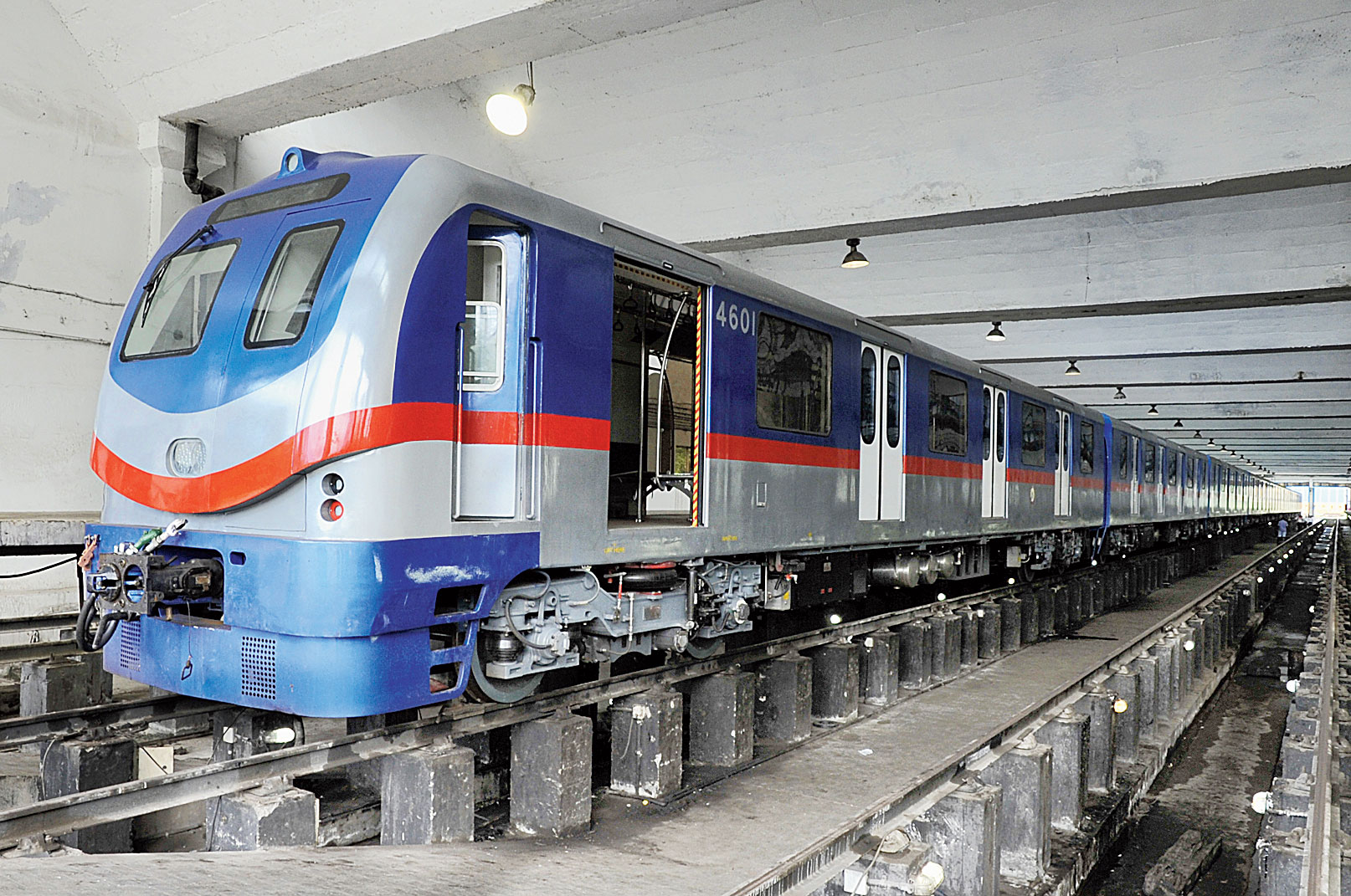Calcutta Metro lacks some standard safety features, an inquiry into a passenger’s death at Park Street station on July 13 has revealed.
The report of the commissioner of railway safety (Metro circle) reached the Metro headquarters on September 4. Metro reported on Thursday that the report blamed the “unusual occurrence” on the “carelessness of the passenger”.
Sajal Kumar Kanjilal, 66, was dragged to death after a part of his hand got stuck between the flaps of a door of an air-conditioned train he tried to board at the last moment.
The 48-page report calls for a reduction in the tolerance limit — which allows a train to run despite the gap between the leaves of a door. “The CRS has suggested that the gap should first be reduced to 10mm and then gradually to 5mm,” said an official who has read the report.
A day after the accident, a Metro official had told this newspaper that the tolerance limit was 30mm when the rake had arrived but was reduced to 20mm.
The authorities had referred to CCTV footage to assert that Kanjilal’s fingers were stuck between the door flaps and the censors failed to detect them. “Had his palm been stuck, the doors would have opened and the train stopped,” an official had said.
Commissioner of railway safety (Metro circle) J.K. Garg in his report has mentioned the absence of emergency stop plungers at Metro stations, said sources. Located on a wall or a pillar at the platform, the plunger can be activated by a passenger in an emergency. The device will stop the train by switching off traction power or alert the driver so he stops the train.
Such plungers are installed at Metro stations in Delhi, Lucknow, Hyderabad and other cities. “Installing them in Calcutta involves a lot of technical challenges because it is the oldest Metro in the country,” an official said.
The report urges Metro to improve manual security. “Additional security staff should be deployed at critical locations to ensure proper boarding and deboarding of passengers,” the report says.
Crowd management is now the responsibility of Railway Protection Force jawans. The sanctioned RPF strength for Metro is 900 but there is a shortage of around 150 jawans, said sources.
The standard workforce for a Metro project is around 30 personnel for every kilometre. Calcutta Metro has around 150. Despite having excess personnel, the Metro authorities do not any deploy any employee exclusively for crowd control.
“We cannot outsource operations. But our employees are not sitting idle. East-West Metro, once operational, will need a lot of manpower,” said a Metro official.
The report also calls for an increase in the volume of the audio alarm during the opening and closing of train doors.
In July, Garg had submitted an initial list of suggestions to the Metro general manager. Some of those have been repeated in the latest report, such as installing CCTV cameras inside coaches and upgrading the ones installed on platforms.
“We have implemented some of the recommendations, like frequent announcements on platforms to dissuade passengers from boarding at the last moment. We are also on track to replace the old coaches,” said Satyaki Nath, the principal chief operations manager of Metro Railway.
The relatives of Kanjilal said they were waiting to get a copy of the report before deciding on their course of action. “We saw on TV that the report has blamed carelessness of the passenger. We are shocked,” said Subrata Das, Kanjilal’s brother-in-law.

